The other day I was recording a podcast episode with my
co-host Eric Siu and he wanted to discuss something in particular.
He wanted to talk about how I got to 62,000 Instagram followers in a very short period of time and without spending any money on ads or marketing.
Eric is a great marketer as well, and when it comes to
social media, he spends much more time than me on it and he even has people at
his ad agency dedicated to helping him grow his personal brand online.
And of writing this post, he has 4,056 followers.
It’s not just with Instagram either, I beat him on all
platforms.
Heck, he even does something that I don’t do, which is smart… he continually pays for advice. For example, he had his team jump on an hour call with Gary Vaynerchuk’s social media team so they could learn from them and grow his brand faster.
So, what’s the secret to my success?
Well, before I get into it, let me first start off by saying I love Eric to death and the point of this post isn’t to pick on him or talk crap… more so, I have a point to make and you’ll see it in a bit below.
Is it the fundamentals?
Everyone talks about strategies to grow your social following… from going live and posting frequently or talking about the type of content you should post and what you shouldn’t do.
I could even tell you that you need to respond to every comment and build up a relationship with your followers, which will help you grow your following and brand.
And although all of this is true, I dare you to try the fundamentals or the strategies that every marketing guru talks about doing. If you do, I bet this will happen…
It will be a lot of work and, if you are lucky, in the next 30 days you may get 10% more followers.
Sure, some of you will get much more growth, but you’ll find
that you can’t always replicate it and it won’t be consistent.
So, what is it then?
Is it luck?
Luck is part of some people’s success, but not most. The problem with luck is it doesn’t teach you much and it isn’t easy to replicate.
The reality is, some people will just get lucky and have tons of traction.
In other words, luck isn’t the secret. But if you do want to get “luckier”, then you can always become an early adopter which helps a bit.
How early is early?
When you jump onto a social network when it’s new, it’s
easier to grow and become popular.
For example, I got to over 30,000 Twitter followers
extremely fast when Twitter first came out.
At that time, I wasn’t as well known… it happened because of
a few reasons:
- Social algorithms are favorable early on – algorithms are typically favorable and most people will see your content. There aren’t many restrictions, hence it’s easier to grow. After a social network becomes popular, algorithms tighten up.
- Algorithms are easier to game early on – when you are early, you can use a lot of hacks to grow faster. For example, on Twitter, I would just follow tons of people a day and unfollow anyone who didn’t follow me back.
- First movers’ advantage – social networks want more users, that’s what they need to succeed. In the early stages of any platform, they want to help you gain more of a following so you will keep using their platform.
But here is the thing: even though being an early adopter helps, it’s not the secret to my success.
Just look at Instagram, I am really late to the game. But I started growing fast just this year as that is when we really started.
If you can get in early, you should do so, assuming you have
the time to invest. For example, this is the time to get in on Tiktok.
When you get in early, there is always the chance that the social network may end up flopping. But if it does take off, you’ll be ahead of your competition.
So what did I do?
Here was the secret to my growth… and it still works today. Eric Siu is even doing it with me right now.
It’s piggybacking on brands that are already popular.
When I first started, no one knew who I was. And I’m not saying everyone knows who I am today… by no means do I have a large brand like Tony Robbins.
What I did early on in my career was piggyback off of other popular brands.
For example, I hit up Pete Cashmore from Mashable, Michael Arrington from TechCrunch, Arianna Huffington from Huffington Post, and so many other popular sites like ReadWriteWeb, Business Insider, Gawker Media, and GigaOm to name just a few.
I know some of them don’t exist anymore, but back then they were extremely popular. Anyone who was in tech, and even some who weren’t, knew about each of those sites.
So, when I got started as a marketer, I hit up all of those sites and offered all of them free marketing in exchange for promoting my brand and adding “Marketing done by Neil Patel” or “Marketing done by Pronet”, which was my ad agency back then.
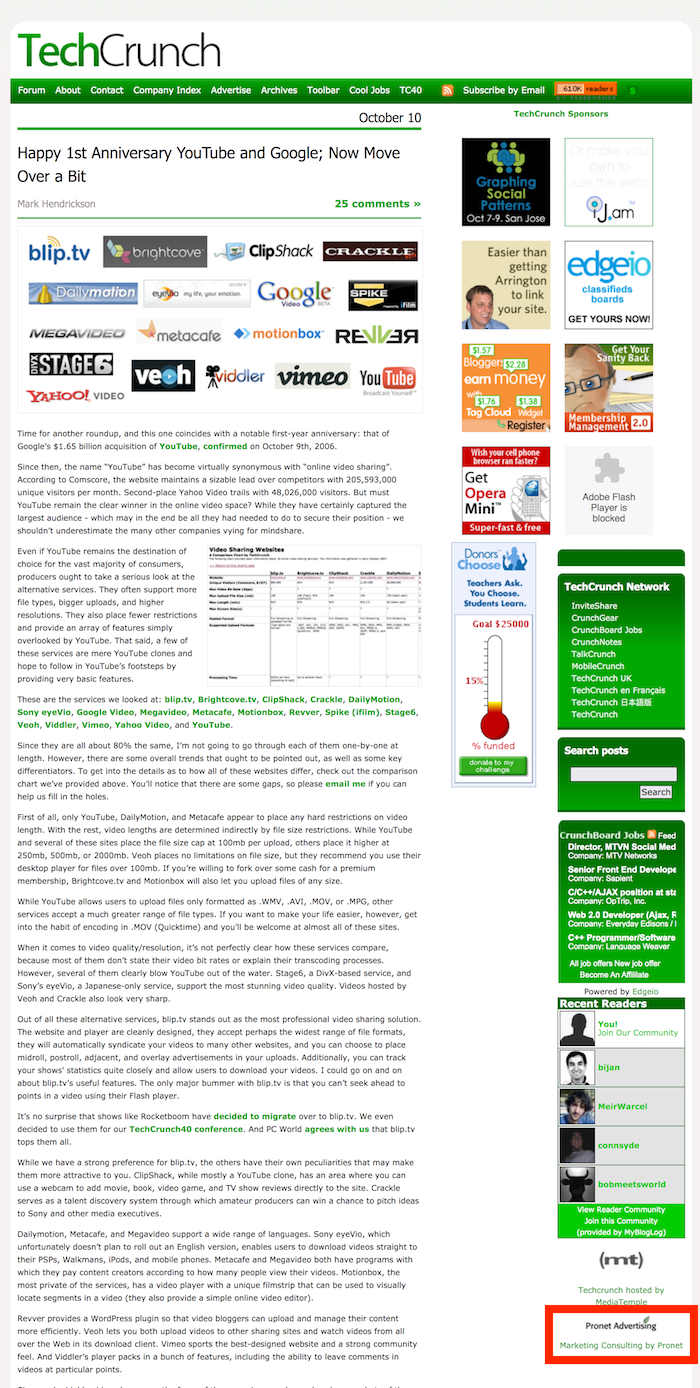
Just look at the image above. TechCrunch used to link to my site on every page of their site… forget rich anchor text, it really is all about branding.
The hardest part is, I had to email and message these
influencers dozens of times just to convince them to let me help them for free.
And a lot of them ignored me or didn’t accept my offer.
But of a few said yes.
Pete from Mashable was one of the first to say yes. Once his traffic and rankings skyrocketed, his competition hit me up. Especially TechCrunch.
What was funny, though, is that I was constantly emailing TechCrunch and didn’t hear back. 6 months from my first email, they eventually accepted my offer.
I made a deal with Michael Arrington at the time in which once I boosted his traffic, he would add a logo that I did marketing for him, which you saw above.
In addition to that, he would tell all of his venture capital friends what I did for him and share the results (so hopefully they would share it with their portfolio companies, which would help me make money) and write a blog post about me.
He didn’t end up writing the blog post, which is fine, but he
did the other two.
When he sent out emails to VCs showing a Google Analytics graph of his traffic growing at a rapid pace, I quickly got inundated with inquiries about my marketing services.
In addition to that, I was building up my brand… and my
social media following. I was gaining “social clout” because I was doing good
work for influencers.
One could argue that boosting traffic for someone like TechCrunch by 30% is worth millions and I should have charged for my services. Although I spent countless time doing free work, I wouldn’t trade it for any single dollar as it is what made me and helped build up my reputation.
And I didn’t stop there. Even today, I try to associate myself with other popular brands. Just like how I was lucky enough to work with Robert Herjavec, who has a popular TV show in the US along with Mark Cuban…

Here’s how many visitors I was getting for my name “Neil Patel” on a monthly basis before I started working with Robert.
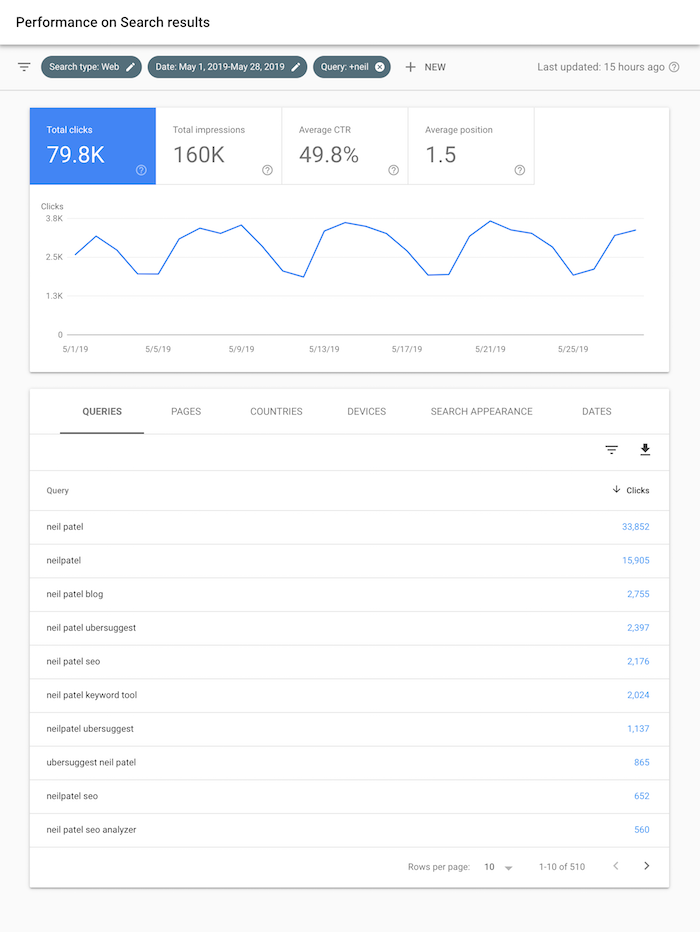
And this is how many visitors I get for my name on a monthly
basis a few months after I worked with Robert.
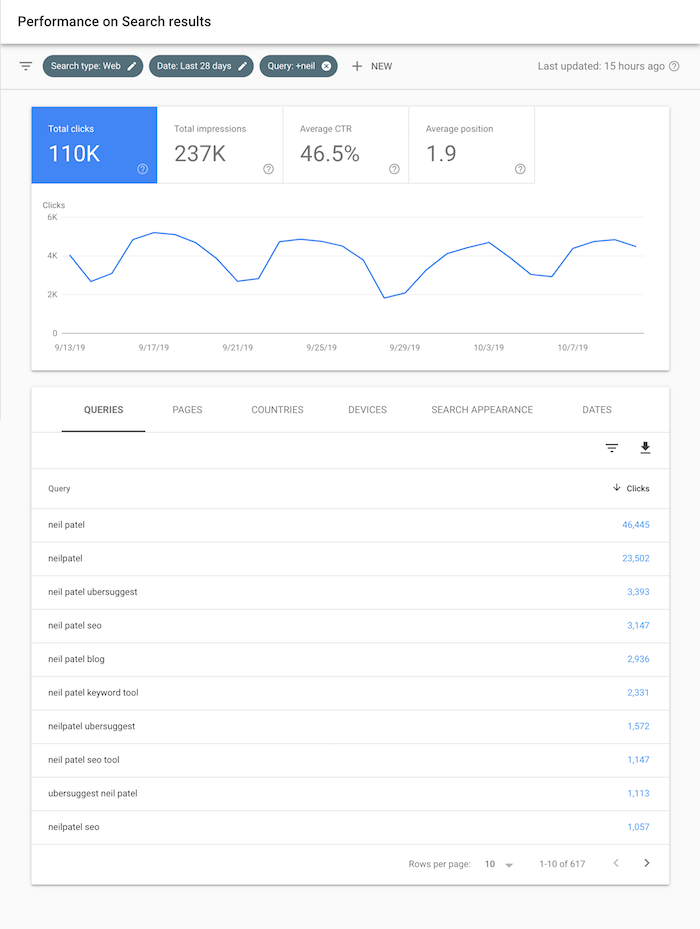
That’s a 37.84% increase in a matter of months!
By piggybacking off of popular brands, it doesn’t just help my website traffic but also helps to grow my social media following as well.
Just like as you can see below with my Instagram growth…
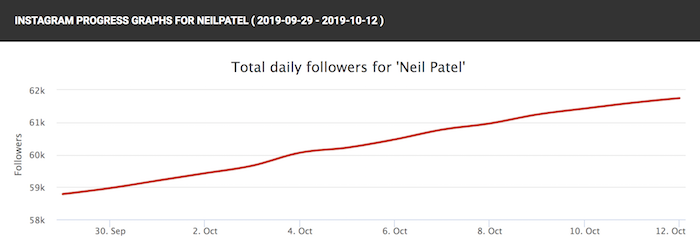
Now it isn’t just me who can do this, anyone can.
How can you piggyback off of other brands?
Just like how I piggybacked off of brands like TechCrunch, Eric is doing something similar to me at the moment.
We have a podcast that generates over 1 million downloads a month.

Eric’s had a podcast for years, but the one he has with me has more than 10x the listeners. This has helped him grow his brand a lot over the last year.
Let’s just look at the data. According to Eric, due to the podcast, he has signed up 6 clients, which has generated 540,000 dollars in annual revenue.
Now when he goes to tech conferences, 3 to 4 people tend to come up to him and mention how they love Marketing School and his work. In addition to that, it has been easier for Eric to set up meetings (people respond back to him more now), and he is also getting advisory shares in companies due to his growing brand. And the best part is, he is getting more paid speaking gigs for up to $10,000 a pop because of the podcast.
The data shows it was a good move by Eric for partnering up with me. He pushed me to do a podcast years ago and I told him no because I was too lazy. He didn’t give up though. Eventually, he got me to say yes and flew to my house in Las Vegas to record our first episode.
He did all of the work and it has been a great mutual relationship as doing this podcast has also helped grow my brand at the same time.
Now you are probably thinking, why isn’t his follower count growing fast enough?
Well, he needs to do what he is doing with me with a few more influencers to really put fuel to the fire. Just like how I didn’t only piggyback off of TechCrunch… at one point the Gawker Media network was linking to me on every page of their sites, which was seen by over 100 million unique people per month.
That really gets your brand out there!
Another example is Brian Dean from Backlinko as he did something similar with me back in the day. Years ago I approached him to write a detailed guide on link building with him and he also created videos that were on my old marketing blog Quick Sprout, which helped him grow his brand.
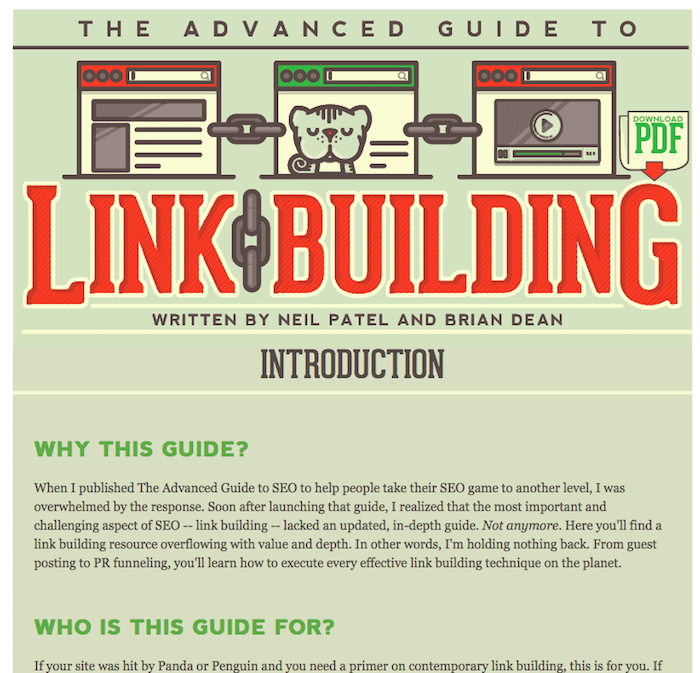
I can’t take credit for “making” Eric or Brian successful. They would have done well without me… and in the grand scheme of things, I really didn’t do much for either of them.
It’s like saying TechCrunch made the Neil Patel brand. Of course, it helped, and helped a lot… but one partnership won’t make or break you.
And if I didn’t continually blog, create videos, speak at events, or do any of the other stuff that I did, the TechCrunch partnership wouldn’t have been as effective.
Eric and Brian would have grown their brand in other ways because their work stands for itself, hence they would have been successful on their own. I just helped provide a little boost, just like how TechCrunch provided me with a boost.
And once more people get to know you, you’ll naturally do
better on the social web.
For example, when Will Smith created his Instagram account, he didn’t have to buy ads or anything. Everyone just knows him already and that’s why his Instagram account blew up really quickly.
And you can do what Will Smith did on a smaller scale. Similar to what I did.
But don’t expect it overnight. Will Smith has been on television for over 20 years. It’s multiple shows, movies, and connections with other famous people that have really helped grow Will’s brand.
Of course, we won’t get on TV as Will has, but you can piggyback on other popular brands multiple times to create a similar (smaller) effect.
All you have to do is help these influencers out for free.
If you are a web designer, offer design services. If you are
a marketer, offer marketing services. If you are selling a product or service,
keep giving it away for free and maybe someone will talk about your company.
If you don’t have anything you can offer that has value, just look at whatever influencer you want to associate with, see where they may need help, learn that skill, and offer it for free.
It’s the easiest way to become popular on the social web.
Conclusion
That’s my secret to being popular on the social web.
It’s also how I built a decent size company… purely by
leveraging other popular brands in the early days.
You can do the same, but you have to be patient. Don’t expect it to happen overnight.
For example, Eric’s brand has been growing but we have been
doing a podcast together for over 2 years now.
Plus, he continually pushes on his own and doesn’t just rely
on leveraging other influencers.
Remember, nothing worthwhile happens overnight.
You have to be persistent with your emails, your direct messages, your text messages, and whatever else you can do to get a hold of these influencers. Most will ignore you but it is a numbers game and, eventually, you’ll be able to associate your brand with someone popular, which will grow your brand.
And last but not least: Don’t expect an influencer to make you successful. Sure, multiple influencers are better than one, but that’s not what I meant.
If Brian Dean from Backlinko wasn’t good at link building, creating content, SEO, and educating, he wouldn’t do well… no matter who he associated himself with. The same goes for Eric.
Your skills, your abilities, your product… whatever you are
trying to brand needs to stand on its own.
So, what do you think about my secret? Are you going to
copy it?
The post The Real Secret to My Social Media Success appeared first on Neil Patel.


0 Comments